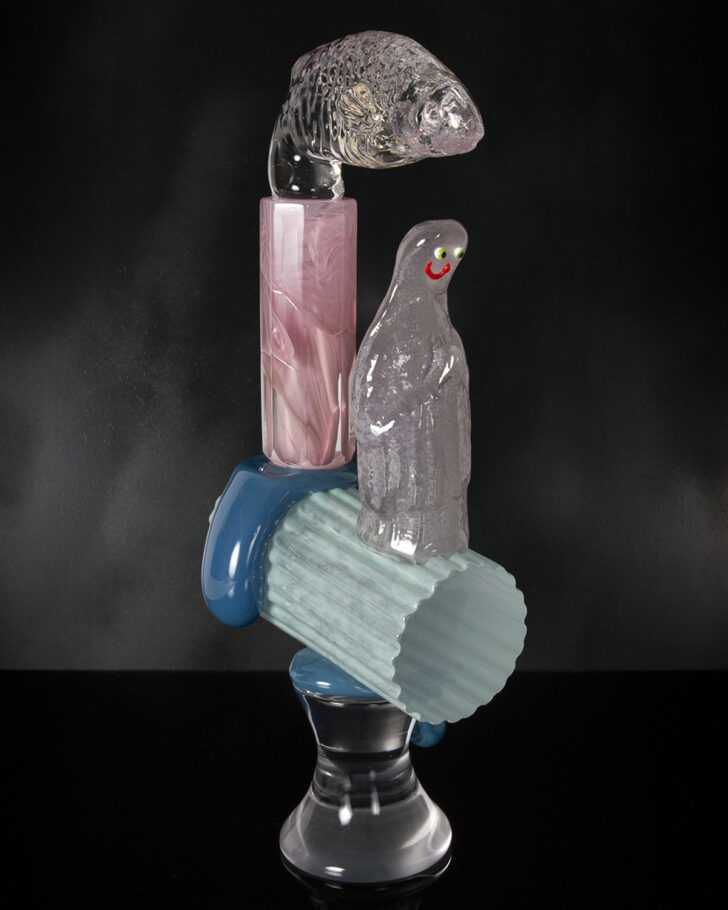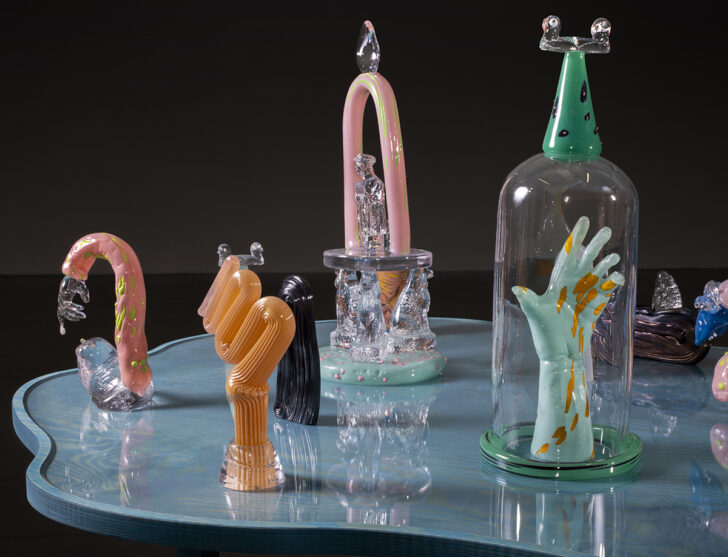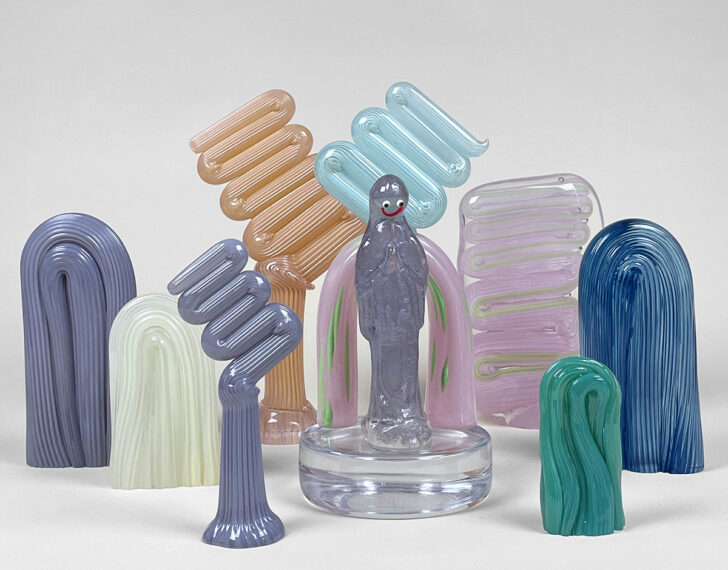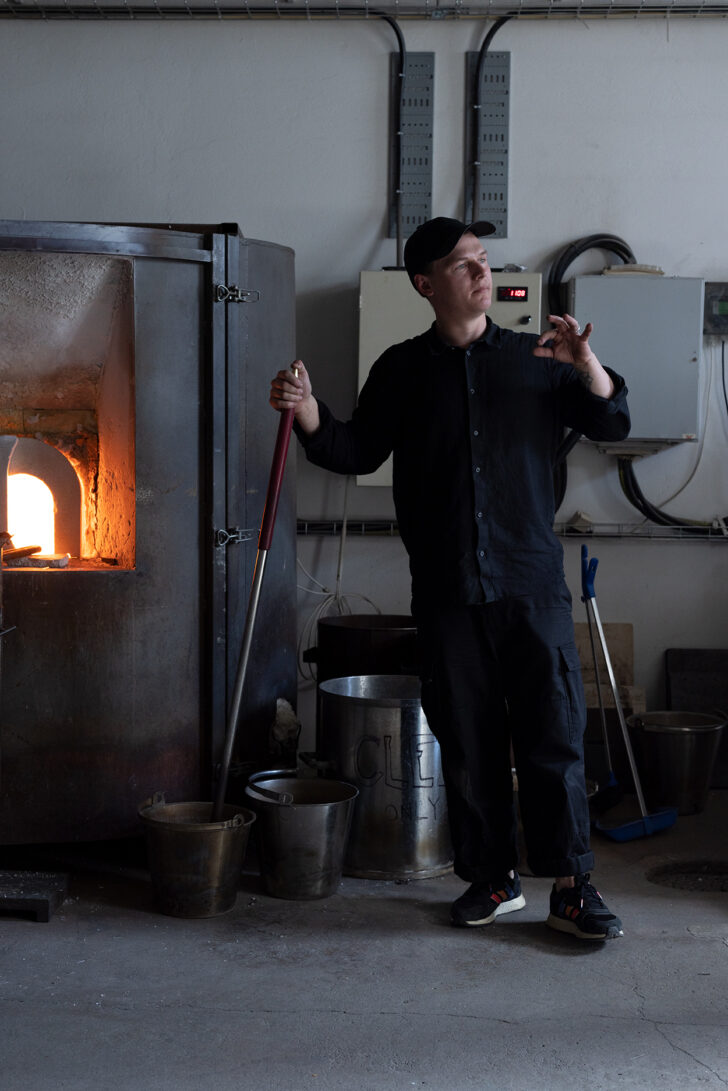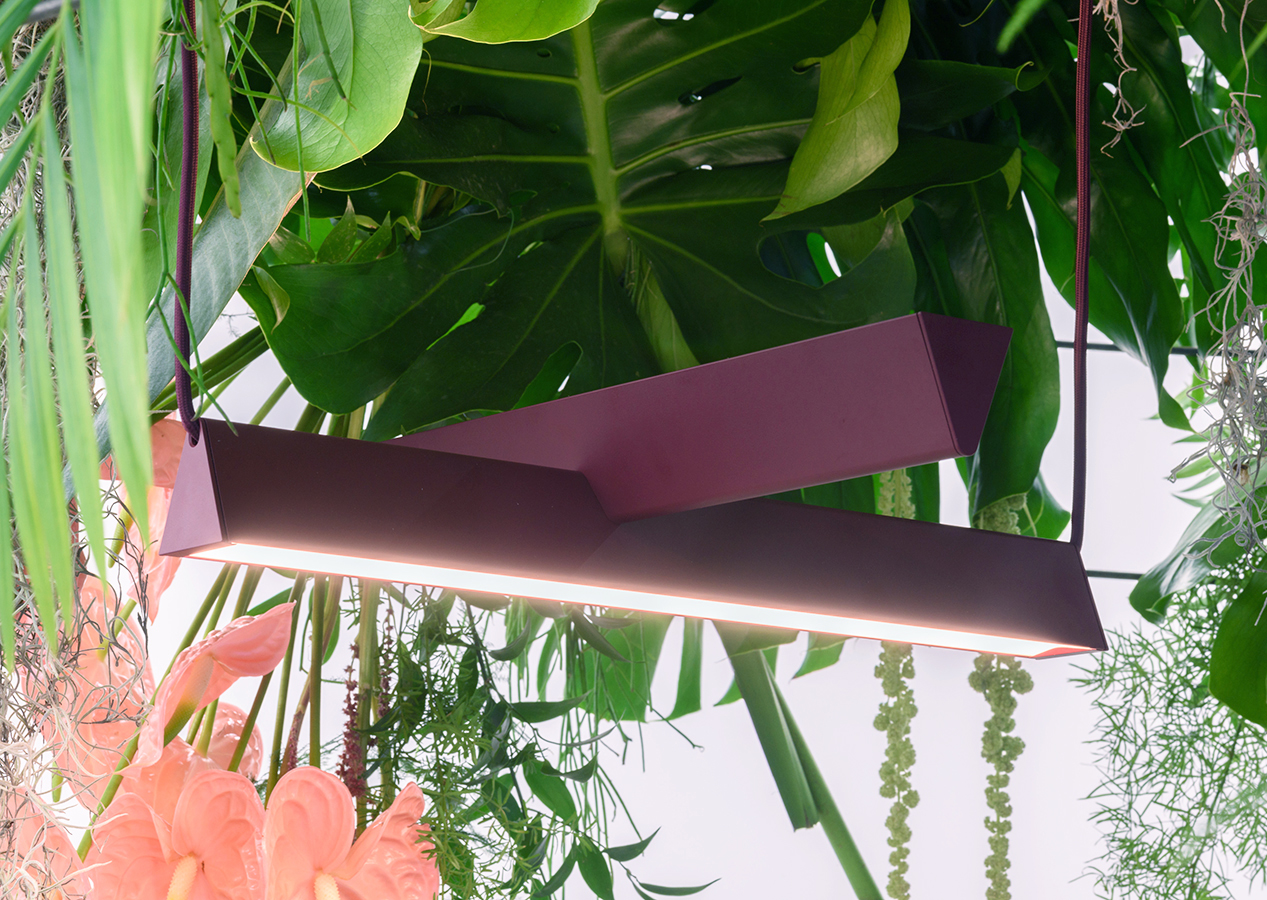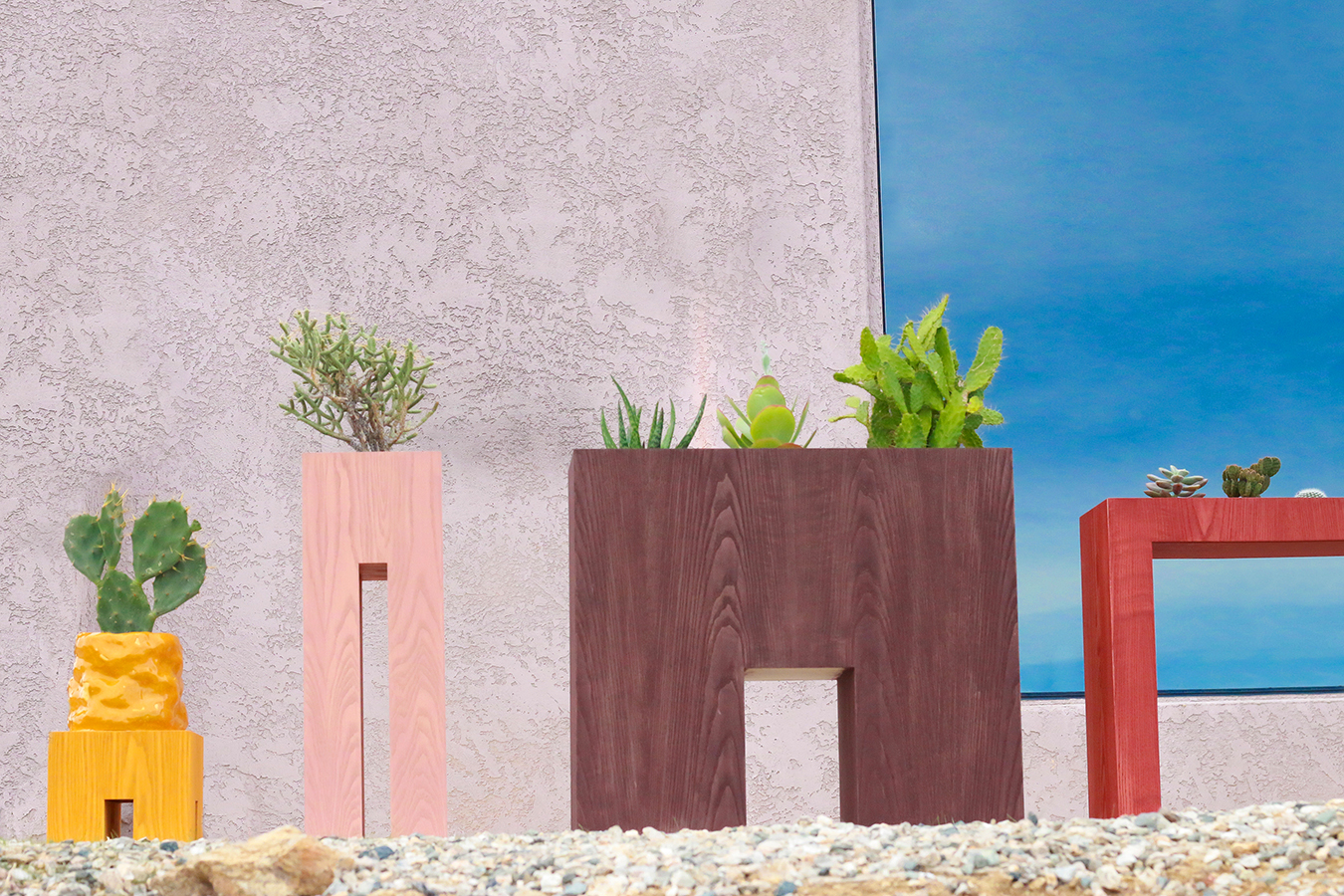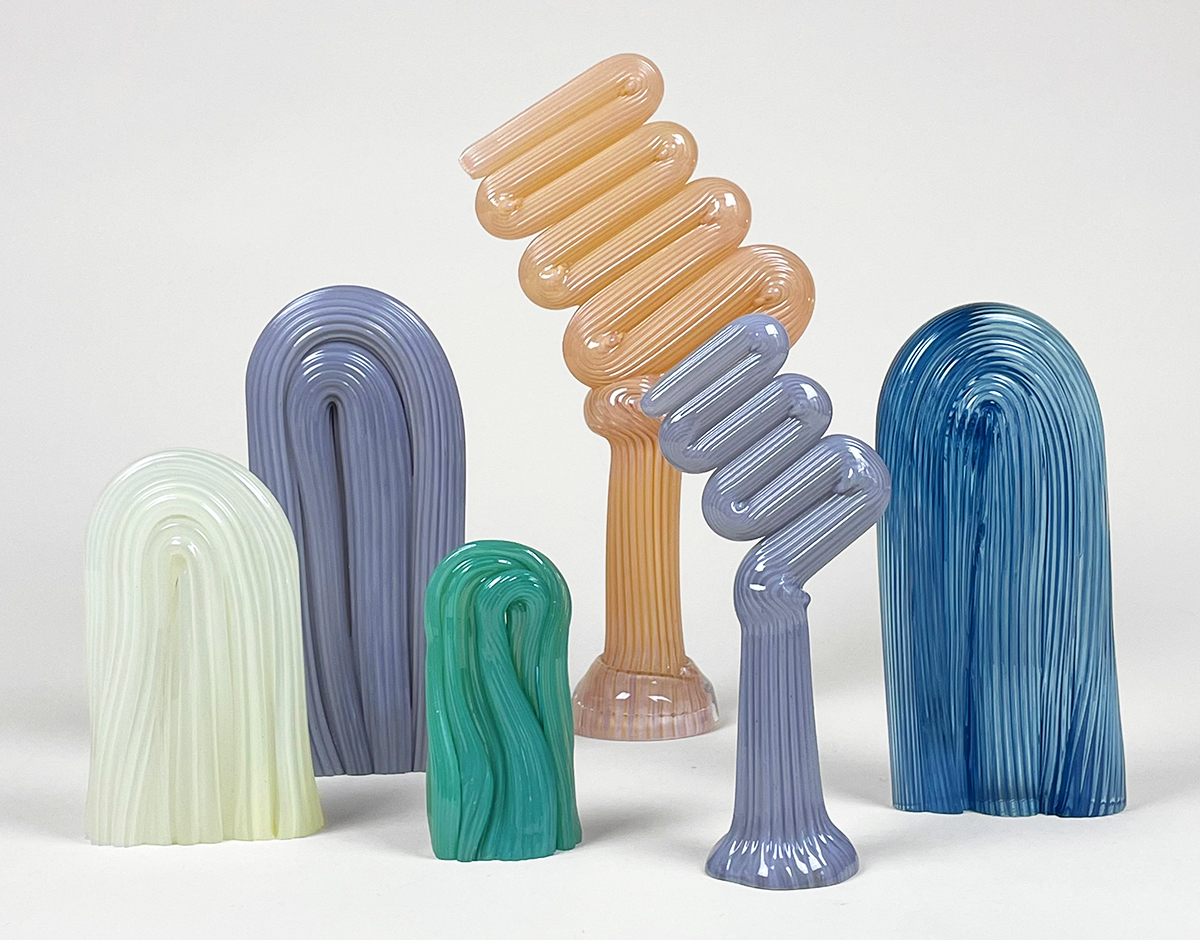
04.29.22
Up and Coming
Rasmus Nossbring’s Glass Sculptures Look Like They Were Squeezed Through a Tube of Swedish Caviar
After 2+ years, it’s finally what we call “design season” — what with New York Design Week, Salone Del Mobile, 3 Days of Design, and the Collectible Design Fair all happening within the coming weeks. With that in mind, we decided to devote two weeks to one of our favorite subjects, and one of the things we enjoy scouting most during those kinds of fairs: new and emerging talents in furniture, interiors, objects, and more. We hope you enjoy!
For Swedish glassblower Rasmus Nossbring, it’s the immersive nature of the medium that’s so compelling. “Glass moves like nothing I’ve ever seen before and to use it demands full attention from your whole body and mind,” says the Stockholm-based artist. “It’s like super Zen and an adrenaline rush at the same time. A lot of people describe it as a dance, and I would say that on the best days I feel like I become one with the material. I’ll use wood, metals, or whatever else is necessary for the process. but only glass has been able to convey what I want.” Nossbring, 30, has been involved with glass production since he was 15, initially through an apprenticeship education program and then working in a glass factory before pursuing his BFA in ceramics and glass at Stockholm’s Konstfack, where he also got an MFA in Craft. In 2018, he became part owner of the STHLM Glas studio, located in a former porcelain factory just outside of the city.
We first spotted his work through the interior design studio and Stockholm shop Arranging Things, whose founders Lisa Milberg and Leo Forsell last month curated Nossbring into Hem’s limited-edition design platform Hem X. The Hem X collaboration includes three versions of Nossbring’s sculpture, called Monument: In each multiple, a short, chunky column supports a slick squiggle that looks like frosting from a star-tipped pastry bag (or, as Nossbring explains below, like tubes of Swedish caviar). While the pieces aren’t large in scale, they have, as their name suggests, a monumental feeling and presence, somehow both quiet and loud.
Whether he’s creating elegantly surreal and abstract shapes or more figurative forms (his early pieces featured “naked men in strange mundane scenarios”), his approach is one of inquisitiveness and curiosity. “Today what I make is a kind of storytelling, more often asking questions than giving answers.” (Though he certainly provided us with some great answers when we reached out!) Read on for more about his method, his style, and what’s been inspiring him.
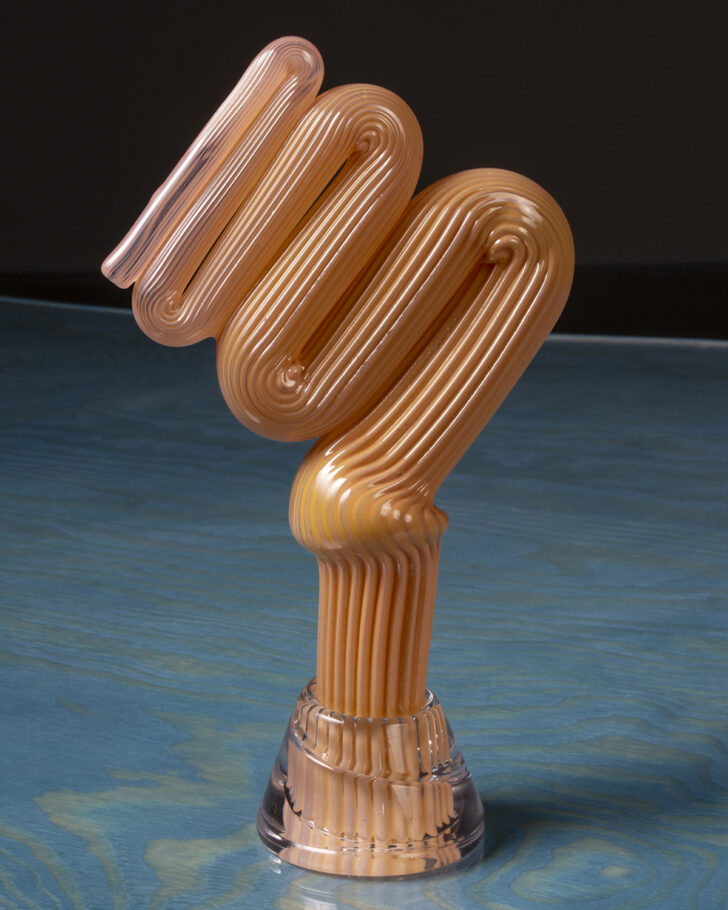
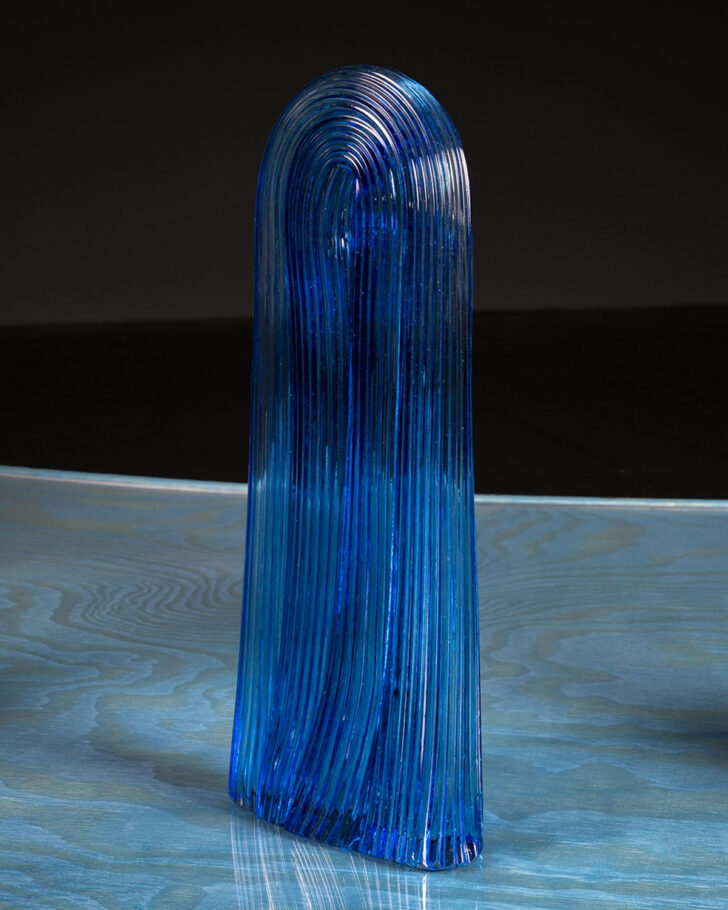
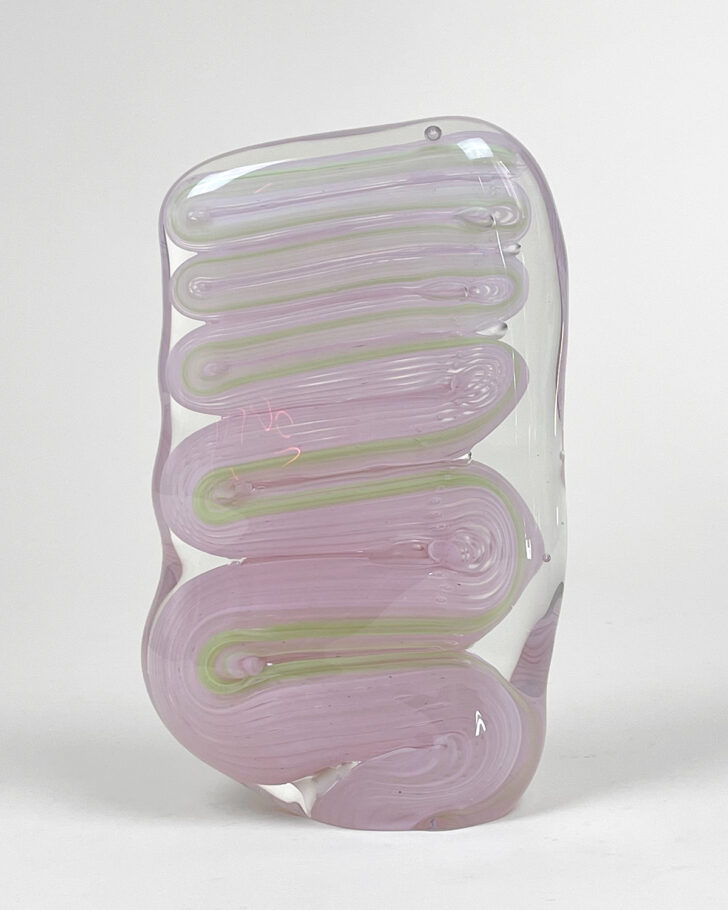
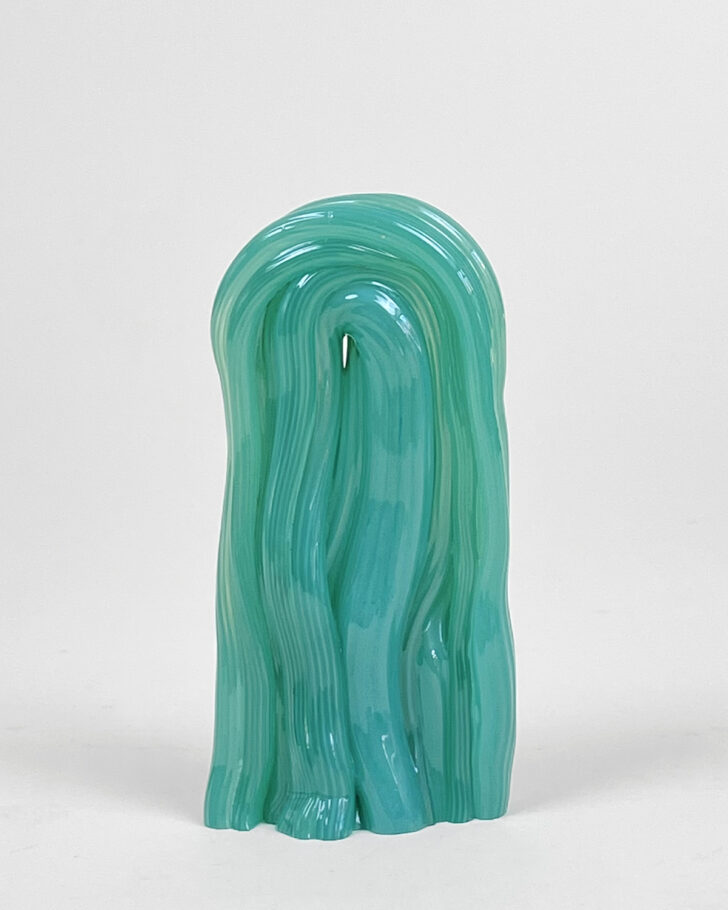
Can you walk me through your creative path and how you got to where you are now?
I didn’t know that one could work as an artist when I started blowing glass. It was a factory job, even though the first time I went there I saw something that I felt in my bones I wanted to understand. I was only 15, and I’m quite sure the factory training “straightened me out” a little bit, and forced me to take care of the responsibilities that the job came with. A few years in, I realized that I wanted to really understand the material, beyond the products we were making, and I was using any break time to do my own experiments. Down the line, this led to me being assigned to work with visiting artists and designers as well as making small bodies of work of my own design for the factory.
When I left the factory for Konstfack, so much opened up. I was allowed free access to a glass studio to create whatever I wanted and explore all kinds of odds and ends. I started travelling to the US to broaden my view and learned from masters from different museums and glass schools all over the world. The more time I spent on figuring out how to make things, and the more academic training I got, the more I started to think of the what and why.
It seems like you’ve moved from more figurative forms to increasingly abstract shapes. What motivated that evolution?
I worked very figuratively for a while — a lot of naked men in strange mundane scenarios, and I loved it. It was well received but when I went for the Masters, I wanted to try to follow a more surrealistic expression that I’ve been trying to find for quite some time. I think giving myself those years to explore and clean up that expression was really great, but I’m still making a lot of figures with strange eyes. In the beginning of these more abstract objects, they were more acting as support for the figurative pieces, but I think they became strong enough on their own. I always seem to have at least two bodies of work going at the same time, intertwining with each other.
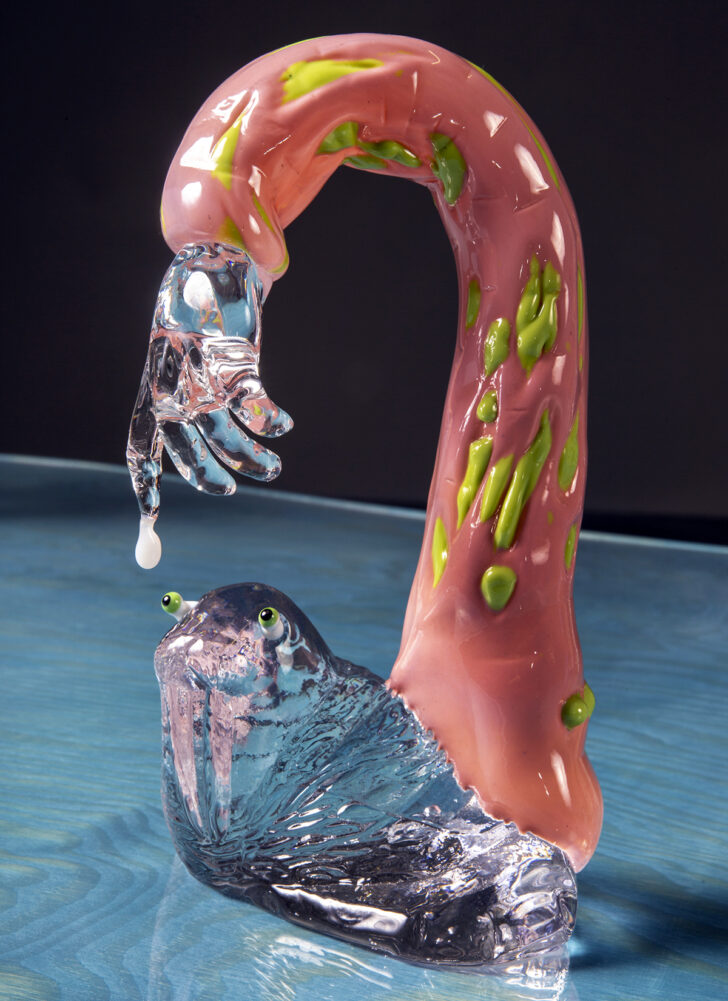
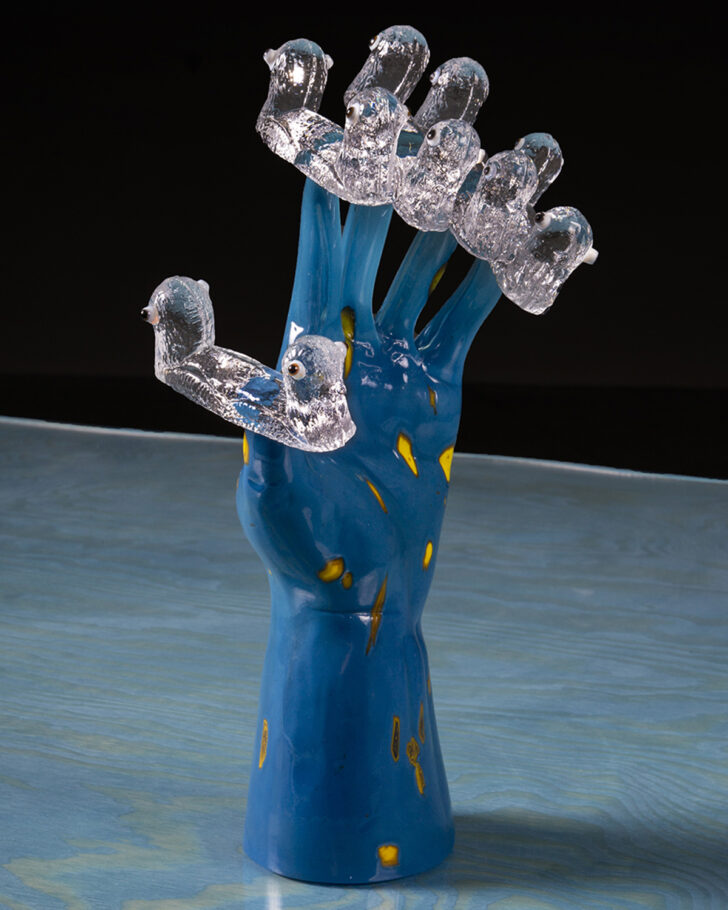
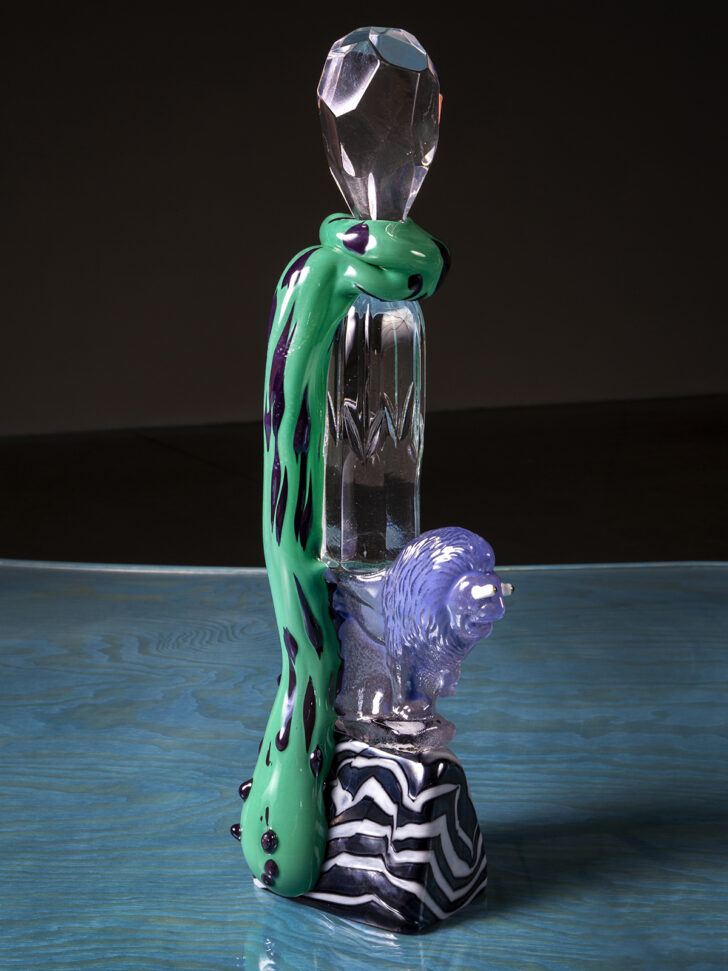
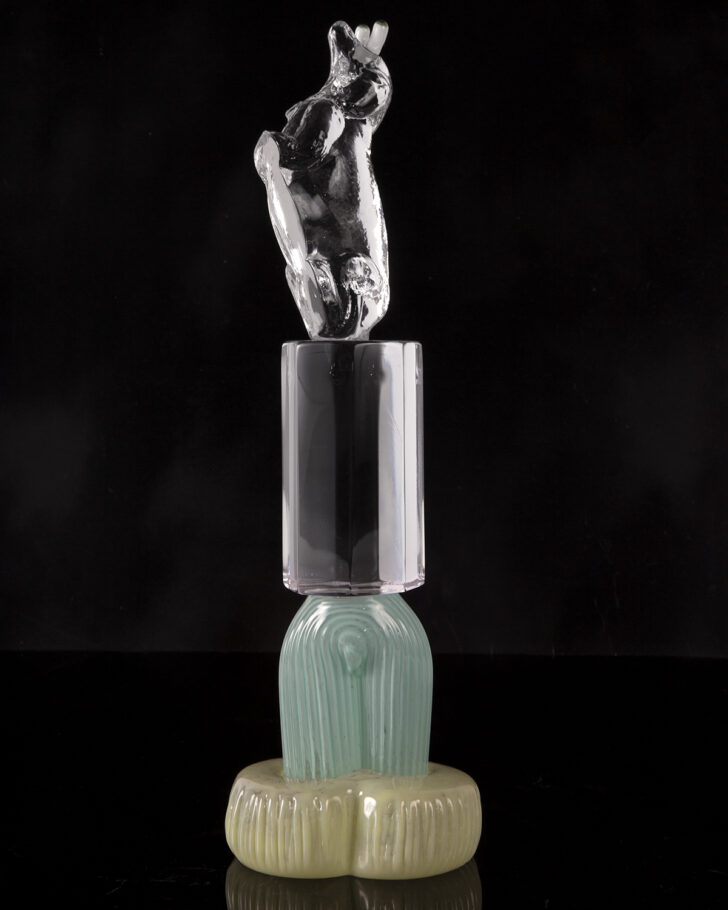
In terms of size and scope, your pieces are largely tabletop sized. Is there something about that volume that appeals to you?
I would say they are usually between 15-50 centimeters. A lot of the work that I do requires detail work, which easily melts away too fast on larger pieces, and most of the time, it’s solid glass. Large pieces of solid glass get very heavy working with for too long without a break and are always a way bigger risk. Even if most of the work I do is already a balancing act. And then there is the simple reason that I mostly make work that I want to hang out with, thinking of it in a space. To make larger work, I guess I would need a larger assigned space.
What’s your process like?
It’s different in each project but it’s quite close to a collage process. I make all these samples and experiments and keep them around in my studio, trying out different combinations and compositions until it feels right. A lot of times the more figurative work starts with writing. Thoughts or ideas that come and go, almost like small poems, that I then try to transfer into sculpture. Pretty much everything I make has color, so that’s also something I think about a lot. I just use colors I like and think will be good or surprising together… But I keep changing my mind until the very last minute.
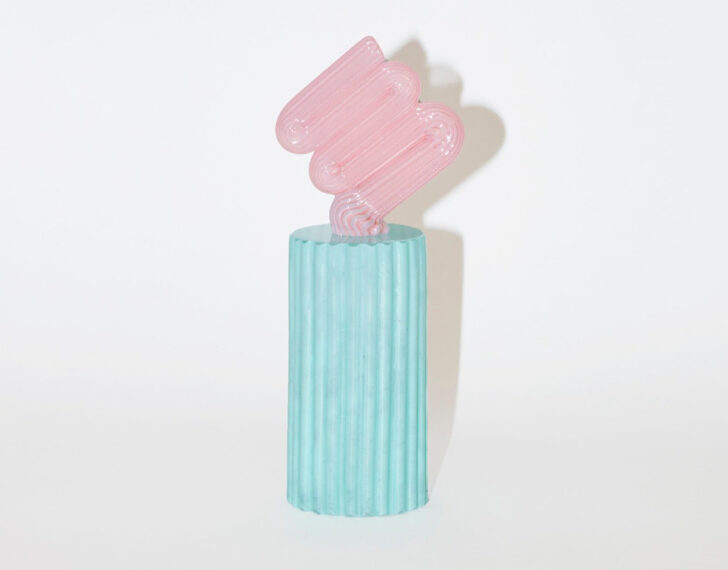
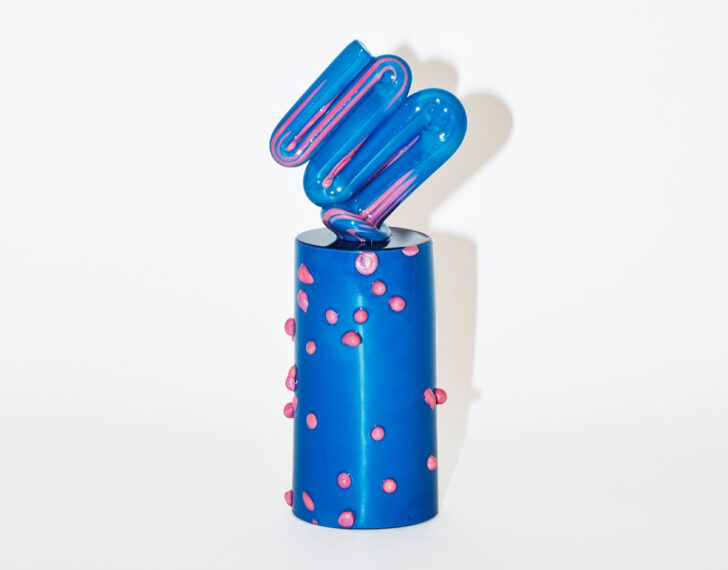
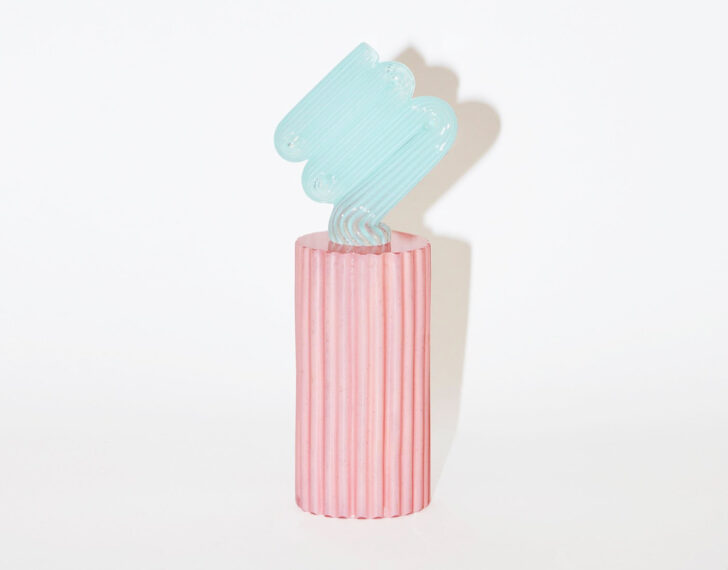
Monument for Hem X
Are there certain things you keep around your studio or home to your inspiration flowing?
My favorite ideas usually come from something mundane, something that catches my attention on my way to work or in the daily lives of those around me. And glass of course, the material research, the art and music and books that I consume. Right now, I would say Joakim Ojanen and Nathalie Djurberg, but I often go back to Basquiat, Schiele, etc. As for music, it’s always on. Current obsessions are Hania Rani, Tallest Man on Earth, and POLIÇA.
I read that when Monument, your piece for Arranging Things/Hem X, began to take shape, you were thinking a lot about the Bouroullec brothers… and Swedish caviar? Tell me more, please!
Yeah, among other things, but I’ve been looking at some of the Bouroullecs drawings and trying to find a way to capture the lines in a sculptural object. But that’s more related to an early stage where the Monuments were still more like a bend rather than a fold. And Swedish caviar comes in these tubes with a star-shaped opening so it gets a quite specific shape and form as you push it out of the tube. Kind of like a tube of paint. Alongside this I was looking at painters (i.e Birgitta Burling) using tools to create textures in a correlating world to the Bouroullecs drawings. And I just needed to try to create that emotion in glass that is both very silent and vulgar at the same time.
What’s next for you? Any upcoming projects on the way?
Full speed ahead! I’m curating a show in Sweden, at Rejmyre Artlab, opening the 28th of May, and two solo shows in the fall, starting with Galleri Blås & Knåda in Stockholm at the end of August, and then at Sintra in Gothenburg in October. It will be a continuation of the latest line of work with a mix of figurative and abstract sculptures, and I’m in the run-up of making the pieces right now!
